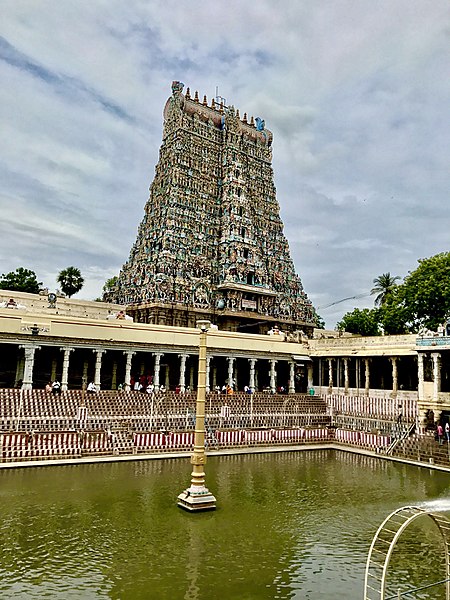Summary
An Architectural Masterpiece
The Meenakshi Amman Temple is not just a place of worship; it is a grand symbol of Indian architecture and spirituality, captivating visitors with its intricate carvings and towering gopurams (gateway towers). Nestled in the heart of Madurai, Tamil Nadu, this historic Hindu temple is dedicated to Goddess Meenakshi, a form of Parvati, and her consort, Lord Sundareshwar, a form of Shiva. The temple’s sprawling complex is a labyrinth of sacred halls, shrines, and water bodies, showcasing a rich tapestry of myths and legends. Each stone and sculpture tells a story, creating a profound narrative that is woven into the very fabric of Indian culture.
Get your dose of History via Email

A Cultural Hub
Beyond its religious significance, the Meenakshi Amman Temple serves as a bustling cultural hub. It hosts the famous annual Meenakshi Tirukalyanam festival, attracting thousands of devotees and tourists from around the globe. The temple’s corridors reverberate with the sounds of ceremonies, music, and the vibrant energy of the faithful, making it a living museum of Tamil Nadu’s enduring traditions. This temple not only connects the past to the present but also serves as a beacon of communal harmony and spiritual solace, inviting all to experience its magnificence, regardless of their background.
A Testament to Craftsmanship
The artistry of the Meenakshi Amman Temple is unparalleled, with its walls adorned with an astonishing array of statues and friezes depicting gods, goddesses, and mythical creatures. The craftsmanship is meticulous, reflecting the height of South Indian temple architecture. The temple features twelve gopurams, with the four tallest ones marking the cardinal directions, and each is a cascade of vibrant colors and detailed iconography. Every inch of this timeless edifice is a silent testament to the artisans who, centuries ago, poured their devotion into every carvings curvature and crevice, ensuring that the temple would stand as an eternal homage to divine beauty.
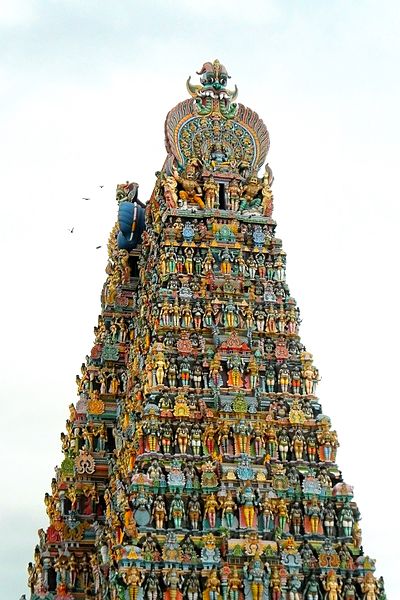
Historical Background of Meenakshi Amman Temple
Early Origins
The Meenakshi Amman Temple’s history stretches back to the early centuries. It stands in Madurai, a city with deep-rooted ties to Tamil literature and civilization. Believed to have been founded by the survivors of Kumari Kandam, a mythical lost continent, the temple has been a significant spiritual center since ancient times. The city of Madurai itself is often called the ‘Lotus City’, with the temple at its core symbolizing the divine presence emerging from the city’s heart. Its origins are shrouded in legends, most notably the miraculous appearance of the lingam, the symbolic representation of Lord Shiva.
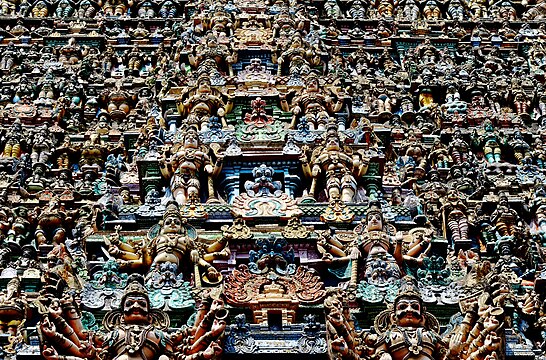
The Temple’s Golden Age
The temple reached its zenith under the patronage of the Pandya Dynasty, known for their fervent devotion to Lord Shiva and Goddess Parvati. In the 12th century, the temple complex we see today began to take shape. This era saw the construction of the grand gopurams and the sacred halls that now define the temple’s iconic skyline. Notably, the reign of King Thirumalai Nayak, a prominent Pandya king, marked a period of significant enrichment, during which much of the temple’s most exquisite architecture and art were developed. The temple not only flourished as a place of worship but also as a hub for Tamil culture and literature.
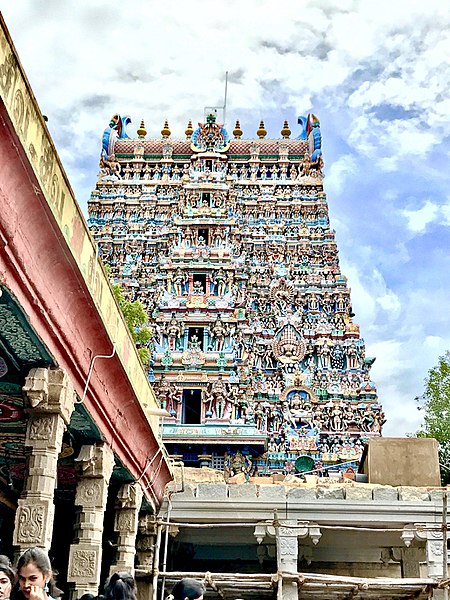
Resilience Through the Centuries
Despite facing invasions and natural calamities over the centuries, the Meenakshi Amman Temple has displayed remarkable resilience. Each time it suffered damage, local rulers and the community have lovingly restored and expanded the temple. The temple witnessed another significant period of restoration and expansion during the Vijayanagar Empire. These rulers left an indelible mark on the temple’s architecture, bringing in Dravidian influences that enhanced its grandeur. The continued efforts to preserve the temple speak volumes about the dedication to maintaining its historical and cultural integrity.
The architectural splendor of the Meenakshi Amman Temple is not only a testament to the builders’ skills but also reflects the vibrant history of Tamil Nadu. The temple serves as a repository of the state’s dynastic histories, with each stone and carving narrating a tale of devotion and artistry. Unsurprisingly, it continues to draw pilgrims and historians alike, who come to study its architecture and divine the secrets of its longevity. The temple’s ongoing maintenance and preservation efforts ensure it remains a beacon of Tamil heritage and spiritual tradition.
Today, the Meenakshi Amman Temple stands as an enduring symbol of faith and history, seamlessly integrating into the bustling life of Madurai. Its festivals and daily rituals keep traditions alive, with the famous Chithirai Festival, celebrating the celestial wedding of Goddess Meenakshi and Lord Sundareshwar, drawing in a diverse crowd each year. The temple’s importance transcends religious boundaries, portraying a picture of a heritage that belongs to all of humanity. Its corridors echo with the footsteps of countless visitors who come to marvel at its history, ensuring the Meenakshi Amman Temple remains an essential pillar of India’s cultural and spiritual landscape.
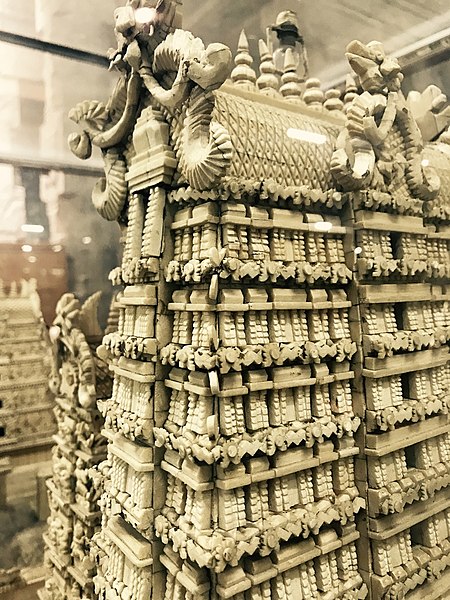
The Discovery of Meenakshi Amman Temple
The temple’s “discovery” is not like that of ancient ruins uncovered by archaeologists. Rather, it has always been an active place of worship. The temple was known to the world through Tamil literature and historical records long before Western travelers described it in their writings.
Chronicling by Colonial Visitors
Colonial-era explorers and traders from Europe often documented existing Indian marvels, inadvertently “discovering” them for the West. Their accounts brought the temple’s grandeur to light for those beyond the Indian subcontinent. Marco Polo, in the 13th century, is one such visitor who mentioned the richness of Madurai and its temple in his travelogue.
Archaeological Renewal
In the 19th century, the temple underwent extensive restoration, which helped in rediscovering aspects of its physical and cultural structure. British archaeologists and Indian scholars collaborated to restore portions of the temple complex. This process also led to the discovery of inscriptions and artifacts that provided insights into the temple’s history.
Furthermore, the temple has been the subject of continuous research and discovery by historians and archaeologists. They have unearthed evidence of trade and cultural exchanges between the Pandya kingdom and other civilizations through inscriptions found in the temple complex.
Today, the Meenakshi Amman Temple is not just a historical site but is still active, revered, and visited by millions annually. Each visit to the temple can be seen as a discovery, where devotees and tourists alike uncover personal insights and experience the spiritual aura of this ancient place.
Cultural Significance, Dating methods, Theories and Interpretations
Heart of Tamil Culture
The Meenakshi Amman Temple is more than a religious site; it embodies the cultural spirit of Tamil Nadu. Its art, architecture, and the daily rituals practiced within its walls have remained vibrant for centuries, bearing witness to Tamil civilization’s continuity. Festivals here are spectacular, epitomizing the community’s bond with the divine. Among them, the Meenakshi Tirukalyanam, the ceremonial wedding of the Goddess Meenakshi, draws a global audience and is integral to Madurai’s identity.
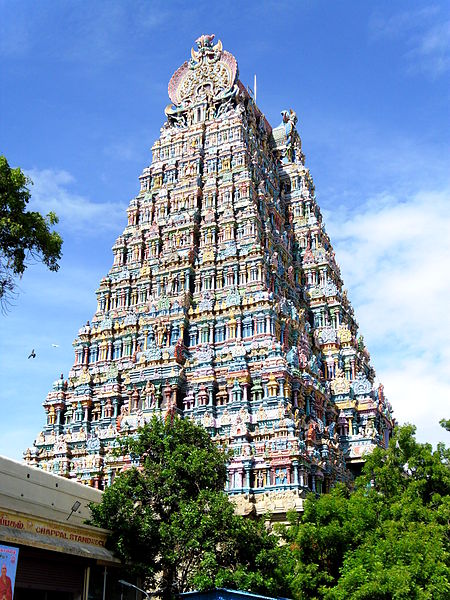
Dating the Ancient Edifice
Dating the temple’s construction accurately has been complex due to continuous additions by various dynasties. Scholars have used inscriptions, literary texts, and architectural styles to estimate its age. Carbon dating and thermo-luminescence have been employed to determine the age of artifacts and structural components, supplementing historical records. These methods provide evidence of the temple’s existence since at least the 7th century.
Architectural Theories and Styles
The imposing gopurams and intricate carvings hint at an evolution in Dravidian architectural traditions. Theories suggest the temple’s design aligns with cosmic arrangements, a belief common in ancient Indian architecture. Each structure is an embodiment of both the divine and the astronomical understanding of the builders. The symmetry and spatial geometry in its design reflect this profound blend of beliefs.
Interpretations of Meenakshi Amman Temple’s structure and iconography reveal insights into the socio-political history of the region. The temple’s artwork depicts scenes from daily life, military conquests, and mythological references. These narratives have become essential in understanding the ethos of the times and the prevailing governance models.
The temple remains a site for ongoing research and interpretation. New discoveries and studies continue to enrich our understanding of its role and significance. As a living monument, Meenakshi Amman Temple continues to influence and get shaped by the cultural current of its land, making it an essential asset to humanity’s shared heritage.
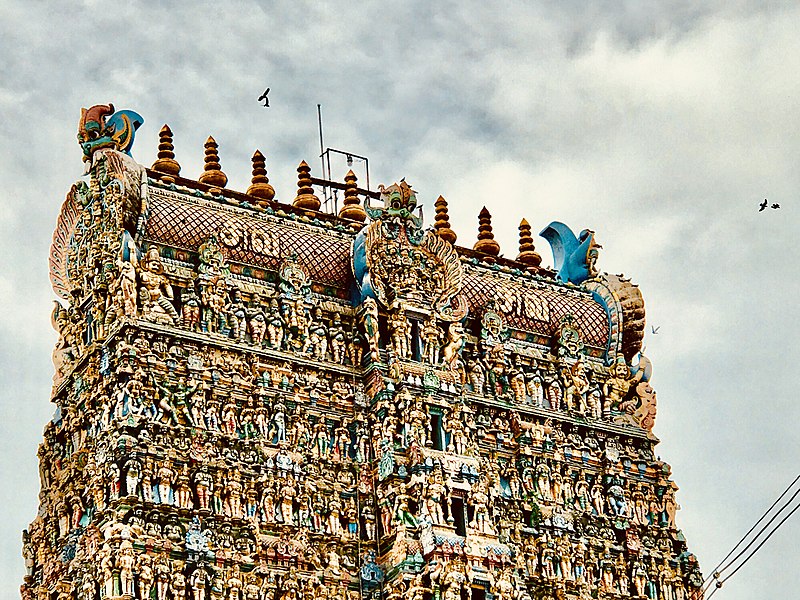
Conclusion and Sources
In conclusion, the Meenakshi Amman Temple stands as a testament to the wealth of cultural and architectural heritage preserved in India. Its historical significance is deeply intertwined with the religious and socio-political narrative of the region. Serving as a pivot around which the city of Madurai has evolved, the temple’s continued importance for pilgrimage, history, art, and culture cannot be overstated. It remains a living testament to the indomitable spirit of human devotion and artistry through the ages.
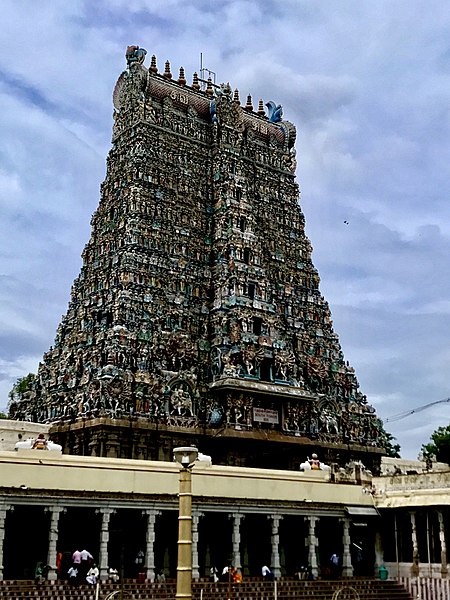
For further reading and to validate the information presented in this article, the following sources are recommended:
Or you can check any of these reputable archaeological and historical texts:
Brown, P., (1952). Indian Architecture (The Islamic Period). D. B. Taraporevala Sons & Co. Bombay.
Harle, J. C., (1994). The art and architecture of the Indian Subcontinent. Yale University Press.
Kramrisch, S., (1976). The Hindu Temple, Volume 1. Motilal Banarsidass Publ.
Michell, G., (1977). The Hindu Temple: An Introduction to Its Meaning and Forms. University of Chicago Press.
Nagaswamy, R., (1995). Madurai, the city of temples: its history from the earliest times to the present day. Meenakshi Temple Society.

